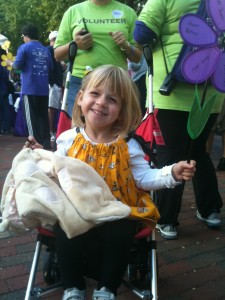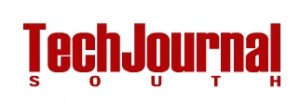 Ever have one of those flashbacks when talking to your kids and think, “oh no… have I become my parents”?
Ever have one of those flashbacks when talking to your kids and think, “oh no… have I become my parents”?
Over the past 6 weeks I volunteered as a coach for the ATDC/TAG CapVenture program. I had similar flashback moments while watching as many as 20 pitches in a row and coaching some of the companies. The advice of past mentors, critics, and investors came flooding back to me – and I saw that feedback in a whole different light.
The program culminated in each company giving a 6 minute pitch – along the lines you’d see at a technology conference like Disrupt. The field was then narrowed to 6 companies for the finale. The company with the best pitch would win a slot to present at Venture Atlanta. Here are the 7 characteristics that differentiated the final 6:
1. They started strong. The winners captured our attention early. They started with a compelling and easy to repeat analogy, story, or some other powerful hook.
2. They had great elevator pitches. Early in the pitch they gave a clear elevator pitch. This kept the audience from being distracted trying to figure out what they did instead of focusing on the presentation. Note: A good summary on elevator pitch best practices can be found on ATDC’s website.
3. They Answered the Key Questions. The biggest challenge in the 6 minute pitch format is covering enough of the Key Questions investors will have in evaluating your company:
- What problem are you solving? What is the ‘pain’ and how is currently being addressed?
- What solution are you offering? What are the key benefits?
- How big is the opportunity and addressable target market?
- Who is your target customer?
- Who is your competition and what is your unique differentiator?
- What is your go to market strategy?
- How will you make money (what is your business model)?
- Why you? Why is this the right team to make it happen?
- What are you asking for? How much are you trying to raise and how far will that get you?
The 6 finalists all did a good job answering most of these questions – and when they couldn’t, they focused on their areas of strength.
4. They had better decks. There is lots of advice out there on how to build a good deck (see Guy Kawasaki’s 10/20/30 Rule of Powerpoint). The point is keep the audience focused on you – not reading slides. On the flip side – most of us aren’t Steve Jobs. Unless you are a uniquely gifted presenter; you need enough information on the slides to help reinforce your story. The best presentations used the least amount of words and employed compelling images to tell their story.
In feedback sessions I watched companies get lots of criticism on seemingly trivial issues with their slides like word choice, graphics, or even spelling errors. What it made me realize is just how distracting those things are to investors who see countless presentations.
5. They were passionate. The finalists last week sold their story rather than explained it. This is hard to do – but you don’t have to be Tony Robbins to accomplish it. What they did well is convey, in their own style, their passion and belief in the opportunity.
6. They had validation. This program was geared towards early stage companies – seed and A round. Even at this early stage, most of the finalists demonstrated some validation of their product or idea. The most compelling validation was customer traction – case studies, adoption rates, or early deals.
7. They practiced. It was clear which companies had given their presentation dozens of times, and which ones edited slides until the night before and were giving the pitch for the first time. Many of the companies took advantage of Start Up Gauntlet. That feedback combined with their coaching got the bugs out and resulted in winning pitches.
These were the 7 characteristics that stood out in the winning presentations. All of the companies made tremendous progress in the 6 week course. I am glad I volunteered to coach. For me, this was truly a case of the coach also being the student – and I will be a better presenter as a result.
In the end, the judges voted David Moeller of Code Guard the winner. His presentation embodied all of these 7 characteristics. He is definitely ready for Venture Atlanta and I look forward to his pitch. I’m certain he’ll keep practicing and it will be even better by October 25th.

 Ever have one of those flashbacks when talking to your kids and think, “oh no… have I become my parents”?
Ever have one of those flashbacks when talking to your kids and think, “oh no… have I become my parents”? Since starting at ATDC (Advanced Technology Development Center), I’ve gotten asked numerous times “what is an EIR?”
Since starting at ATDC (Advanced Technology Development Center), I’ve gotten asked numerous times “what is an EIR?”
